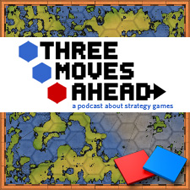I’ll get this right out. I hate puzzles in my strategy games, but I love puzzle games. If a strategy game wants to use puzzles, it has to think of them differently than a true puzzle game does.
Last night, I finally finished Portal 2. I wasn’t sure I would get around to it at all, but my Magicka partner promised that co-op would be great and full of the same hilarious murders we enjoyed in the winter, though I mostly remember her yelling at me to suck less when her wizard exploded because I crossed the streams. Anyway, Portal 2 is a brilliant puzzle game that, like most puzzle games with limited mechanics, gets easier the further you progress. The final chapter and the “boss fight” at the end are more about getting the timing right than actually solving a puzzle, unlike some of the moments you encounter two or three chapters earlier.
Don’t get me wrong, it’s a great game with brilliant writing, amazing visuals and some very clever puzzles. But one of the limitations of all true puzzles is that there is a single answer. Sometimes Portal 2 is like solving a maze puzzle – you know what the end point is going to look like so you just backtrack in small steps until the solution becomes clear. Very rarely were there rooms that had to be worked out forward, step by step.
Another problem with puzzle games is repetition. Portal 2 didn’t have a lot of that, even though the mechanics repeated, they did so in interesting ways. Games like Puzzle Agent, though, will squander good art and a neat setting so they can make you do the same tricks over and over and over. It gets tiring and annoying and makes you wonder just how creative designers are with coming up with puzzles and the like.
In RPGs I like puzzles and riddles a lot. They break from the monotony of killing things, and the good ones are rare enough that they never wear out their welcome. But in strategy games, puzzles remove the single element that makes strategy games strategy games. They replace “find a way to accomplish a goal” with “find the way we have designed for you to accomplish this goal“. You see strategy puzzle design a lot in real time strategy campaigns, where the story doles out new little trinkets or special devices that can only be used in a specific situation. You have to use counterunits religiously, you have to take objectives in a specific order, and you have to use the Gizmo Ex Machina to bring the scenario to a healthy conclusion.
All of this, of course, brings us to Panzer Corps, the new Panzer General remake from Lordz Studios and Matrix/Slitherine. In our podcast on Panzer General, we gave the game a bit of a thrashing in a lot of ways, and it was probably unfair in some respects. But both PG and PC are, at their center, puzzle games – as Tom Chick had to remind a few people a couple of weeks ago.
But these are strategy puzzles, which focus on optimizing your score and moving forward, not merely completing the scenario, and this is what gives the PG/PC structure its compelling power. (Panzer Tactics on the DS was similar in many regards.) Success in a scenario is merely enough to move you on to the next one. Efficient success in a scenario will unlock new units, new missions and, best of all, preserve more of your men for the next fight. Even if you crack a mission and get to Paris before you run out of turns, slowpoking through the Ardennes may have cost you a shot a Britain.
There is a real trap in this setup though. A series of inefficient wins may put you in a situation where you just don’t have the manpower or elite units to win the war. You could hit a roadblock; after all, if you keep bronze medalling everything like a typical Canadian, then you can’t be learning very much and will hit a wall around 1942 that you can’t bust through. The only solution is to go back and retry some scenarios and improve and then hope to move forward. But who has that kind of time and what bad habits have been reinforced by the time you got to Kiev? By saying that any solution counts for something, the PC/PG model can wrap you in a false sense of progress.
I haven’t played a lot of Panzer Corps yet, but I am looking forward to seeing if my puzzle solving skills have been improved by Aperture Science’s testing facilities. Full report from the front soon.


